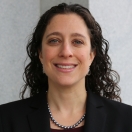
Today, the international community unites to recognize World Elder Abuse Awareness Day: a time to bring visibility to the issue of violence experienced by older adults, express intolerance for abuse, and work toward prevention.
A serious human rights violation that too often goes ignored, elder abuse can include physical, psychological, or sexual abuse; neglect; and financial exploitation. Global data indicates 4 to 6% of adults over the age of 60 have experienced at least one of these types of abuse in the past month alone—a conservative estimate that amounts to 36 million cases worldwide. In a 2010 study, 1 in 10 community-residing older adults in the United States reported experiencing abuse the previous year.
Though both women and men can experience abuse in later life, greater female longevity, coupled with women’s higher risk for poverty and social isolation, suggests that elder abuse is a gendered category of violence. In many respects, violence against older women is an extension of the same social norms that perpetuate violence against women and girls earlier in their lives: entrenched gender bias; impunity for abuse; and unhealthy conceptions of masculinity. In fact, violence by an intimate partner or spouse is a common form of elder abuse, though perpetrators can also be a caregiver outside the family, an adult child, or any other person with whom the victim has a relationship of trust.
We know that abuse transcends cultural, racial, and socioeconomic boundaries, yet conversations about violence against women and girls too often exclude older women, overlooking the impact of age and aging on survivors’ help-seeking behavior, perceptions of abuse, and approaches to healing. Earlier this month, the Office of the Vice President and the White House Council on Women and Girls hosted a conversation aimed at ending this exclusion.
Together, we met with leading advocates in the fields of domestic violence, sexual assault, and stalking to explore how organizations and Federal agencies working to end violence against women can support older victims. Our discussion featured an overview of the nexus between domestic violence, sexual assault, stalking, and elder abuse; explored how service providers can address age as a part of ongoing efforts to develop more comprehensive and victim-centered services; and identified remaining gaps and barriers for our field to build awareness and responsiveness to the needs of older survivors. Advocates working with older adults highlighted the overlap between age, dependence on a caregiver, and a history of trauma on an individual’s increased vulnerability to abuse. Indeed, in some cases, older women who have experienced domestic violence earlier in life face continued abuse in later life; though abusers may change tactics as they grow older, reducing the frequency of physical violence and instead controlling their partners through economic coercion, psychological abuse, and verbal threats.
Acknowledging the intersection of age with gender violence is becoming increasingly important as our world, and our country, is aging. Adults over the age of 65 will represent 20% of the total U.S. population by 2030. Today, women over the age of 50 represent more than one-third of U.S. women. While aging can bring new vulnerabilities and risks for victimization, women remain subject to abuse throughout their lives as a consequence of the same social norms that tolerate violence against women and value female lives to a lesser degree. These constructs also operate within a hierarchy of privileges based on race, ethnicity, socioeconomic status, gender identity, and sexual orientation.
Just as women and girls age and survivors grow older, abuse can continue throughout the life cycle. So, too, can the consequences of trauma and exposure to violence. While victim service providers play a critical role, policymakers must also demonstrate leadership in raising awareness and enhancing the capacity of communities to respond to elder abuse. This year, the Administration is answering that call with a focus on elder justice as a part of the 2015 White House Conference on Aging. This focus reflects Vice President Biden’s lifelong commitment to ending violence against girls and women of all ages, and to ensuring survivors of all ages receive the support, care, and services they deserve to heal from violence and abuse throughout their lives.
This World Elder Abuse Awareness Day, I invite you to join the Vice President and our team in the White House in supporting survivors across the lifespan.
Caroline Bettinger-López is the White House Advisor on Violence Against Women.


